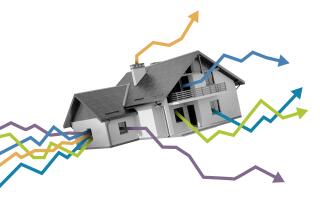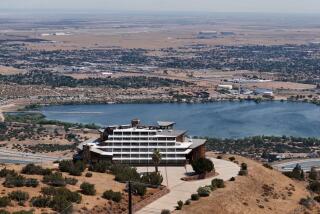In Real Estate Recovery, Valley Brings Up the Rear
- Share via
As 1997 kicks off in the San Fernando Valley, the outlook for real estate is much like the weather: persistent gray skies, with clearing predicted in some distant future.
It’s a forecast that contrasts with the rest of Los Angeles and the state, where rays of light are peeking through.
In 1996, for example, homes sales in California as a whole increased at more than twice the rate of the Valley. And prices statewide held steady in 1996, while they declined here.
“The Valley is lagging a bit,” said G.U. Krueger, deputy chief economist for the California Assn. of Realtors. “Overall in L.A. we have been in recovery since 1993.”
Consider this: While the San Fernando Valley Assn. of Realtors reported that the number of homes sold in the Valley increased 8% from 1995 to 1996, sales in California shot up by 20%, according to year-to-date figures current as of November, Krueger said.
And while the median price of a single-family home in the Valley fell 11% in 1996 to $149,167, its lowest point in a decade, the California Realtors estimate that, in the state as a whole, median prices remained steady in 1996 and may even have edged up slightly over 1995’s median of $178,160.
The Valley looks somewhat better in comparison with the rest of Los Angeles County, but here too the region is still clearly bringing up the rear.
The Valley’s 8% sales growth, for example, falls short of the countywide increase of 16% in 1996, according to the California Realtors’ data, said Krueger.
And the Valley’s 11% drop in median prices surpassed the countywide drop of 3.5% to a median of $173,604 in November.
In fact, median home prices fell more steeply in the Valley than in any county in the association’s survey.
The Valley’s decline even outpaced that of laggard San Bernardino/Riverside counties, where home prices fell a combined 5% in 1996 to $115,510.
The best-performing county in the association’s survey was Orange County, where median prices increased 2% to $213,850 as of November, Krueger said.
In short, the Valley is holding back the county’s real-estate recovery, which is being driven by strong improvement in the market for upscale homes on the Westside and the South Bay, as well as demand for entry-level homes from an emerging ethnic middle class elsewhere in the county, Krueger said.
This dynamic is clearly at work in the Valley, where first-time buyers are the driving force in the real-estate market, but lingering effects of the Northridge earthquake may still be depressing prices, he said.
Still, local experts see reason to be optimistic that the Valley will soon catch up.
Fred Sands, of Fred Sands Realtors in Los Angeles, said the southeast San Fernando Valley in particular has already rebounded strongly, driven by demand from entertainment industry workers.
“In our Studio City offices, 50% of transactions now are entertainment driven,” he said.
Krueger agrees.
“I don’t think the Valley is in such dire straits. If it was a city, it would still be one of the biggest, richest and economically dynamic cities in the U.S.”
(BEGIN TEXT OF INFOBOX / INFOGRAPHIC)
Housing Trend Comparison
Single-family home prices were generally lower in 1996 in the Los Angeles area, while sales were up. Figures shown are through November for 1995 and 1996, except where noted.
California
Median price of a single-family home: +.05%
Number of resales of single-family homes: +20%
Los Angeles County
Median price of a single-family home: -3.5%
Number of resales of single-family homes: +16.5%
San Fernando Valley:
Median price of a single-family home: -11%
Number of resales of single-family homes: +8%
Sources: California Assn. of Realtors, San Fernando Valley Assn. of Realtors
More to Read
Inside the business of entertainment
The Wide Shot brings you news, analysis and insights on everything from streaming wars to production — and what it all means for the future.
You may occasionally receive promotional content from the Los Angeles Times.








